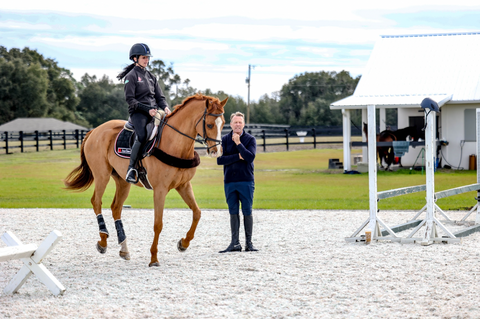You Can't Skip Your Flatwork - Why It's Non-Negotiable

**Please note - this blog is written by Equestrian Masterclass instructor Peter Wylde**
I believe you can really learn a lot about a rider based on how they approach flatwork.
Most people will know me as a rider who found career success in the jumping arena, and certainly the technicality and adrenaline of mastering a big course is an unparalleled experience. However, what I think sets successful riders apart is not only their competitive results, but the time they put in at home, when the jumps are put away.
This month on NÖELLE FLOYD Equestrian Masterclass, I’m releasing my 5 ride Training Program all about flatwork “non-negotiables” that I feel every rider should be comfortable with.
Am I turning the notion of flatwork on its head and introducing a radical new concept? Of course not. The reality is that flatwork is simple. Some may confuse simple with “boring”, but I firmly believe that not to be the case.

The best riders in the world look as if they are doing nothing in the saddle. That fine-tuning and refinement comes from practice on the flat, which does the double duty of strengthening the horse’s body while also reinforcing the relationship between horse and rider. Establishing quiet, seamless communication on the flat translates into smoother jump rounds.
So, in my new Training Program, I’ll show you my go-to flatwork warm-up and some foundational exercises that will benefit any horse and rider. We’ll cover things like transitions, lengthening/shortening the canter stride, incorporating poles, and using flatwork to troubleshoot.
This program is simple and effective, and it should become a part of your riding routine. I encourage you to return to it time and time again, and watch your horse become more rideable as you go.
Success starts with the simplest work. See you out there!
To learn more about Peter's new training program, Flatwork Non-Negotiables, click here.



